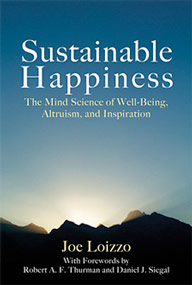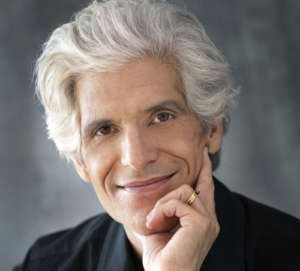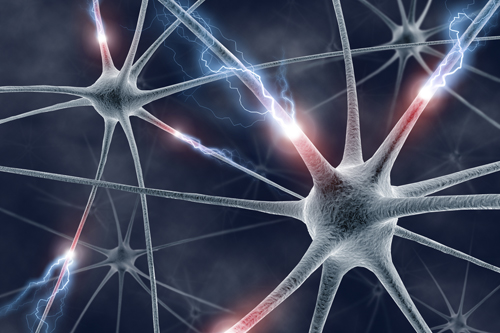

If you’re a regular visitor to Rewire Me, you know that I’m really drawn to the work of Dr. Joe Loizzo. He is a Harvard-trained psychiatrist and Columbia-trained Buddhist scholar, as well as the founder and director of the Nalanda Institute for Contemplative Science. He teaches Clinical Psychiatry in Integrative Medicine at Weill Cornell Medical College, and is currently an adjunct Assistant Professor of Religion at the Columbia Center for Buddhist Studies.
Soon after Dr. Loizzo’s book Sustainable Happiness was released, I had the opportunity to speak with him about his writing and his work. Here is the second of our three conversations.
I think there is confusion nowadays between compassion and empathy. People don’t really understand the distinction.
Right. I went to this fascinating conference in Denver recently called the First International Symposia on Contemplative Studies. I was shocked to see that not only had the research on mindfulness really blossomed—there were people there who had been working on this for years and years—but there were a number of new labs that had begun to focus on compassion. They were beginning to tease out the neuroscience and to show how compassion training helps people convert normal empathy, which can often be stressful, to resilience and a positive capacity to deal with other people’s distress and not feel exhausted by it or drained by it.
I think compassion is going to be the next wave after mindfulness because our lives are other people.
With all my practice and years of schooling, I still feel I suffer from that compassion issue. I feel too much, I personalize it, and it really is not personal at all. And it’s funny because I teach my eleven-year-old daughter how it’s okay to feel bad for someone, but just feel bad for them and don’t take it on. Because she does the same thing—she’s learning from me.
 What we’re learning from neuroscience is that we have, especially in the prefrontal cortex, the new part of our brain; I call it the extra scoop—the thing that makes us distinctively human—we have these mirror neurons that literally allow us to read the facial and body language of another person and call on our own memory of what we would be feeling if we were showing those expressions or moving in that way and then call up an emotion within us that probably resonates with what the person is feeling. So we have wired-in capacity, this naturally occurring capacity to replicate or try to imagine what another person is feeling. But if we don’t educate it, if we don’t develop resilience and reality checks on that capacity, we end up experiencing what some people call “contagion,” which is when you’re not catching the other person’s suffering, but the feeling flows from them to you and it is overwhelming. Learning how to do this in a disciplined way is so important, especially in the lives that we lead because we’re not living in the wild anymore where we see mostly trees or mangoes; we’re living in a very unnatural world that’s full of people, and everything we do relates to other people and there’s a lot of distress out there. So if we’re not really trained, if we haven’t adapted ourselves to respond in a healthy, happy way, then really it’s easy to get worn down.
What we’re learning from neuroscience is that we have, especially in the prefrontal cortex, the new part of our brain; I call it the extra scoop—the thing that makes us distinctively human—we have these mirror neurons that literally allow us to read the facial and body language of another person and call on our own memory of what we would be feeling if we were showing those expressions or moving in that way and then call up an emotion within us that probably resonates with what the person is feeling. So we have wired-in capacity, this naturally occurring capacity to replicate or try to imagine what another person is feeling. But if we don’t educate it, if we don’t develop resilience and reality checks on that capacity, we end up experiencing what some people call “contagion,” which is when you’re not catching the other person’s suffering, but the feeling flows from them to you and it is overwhelming. Learning how to do this in a disciplined way is so important, especially in the lives that we lead because we’re not living in the wild anymore where we see mostly trees or mangoes; we’re living in a very unnatural world that’s full of people, and everything we do relates to other people and there’s a lot of distress out there. So if we’re not really trained, if we haven’t adapted ourselves to respond in a healthy, happy way, then really it’s easy to get worn down.
We’re trying to make the Nalanda tradition accessible. Nalanda was an ancient university in India, some people say the first or at least one of the first important universities—way back in the fifth century was when it started. Why it’s relevant for us is it took the tools that had been in the monasteries and made them available to people living in mainstream society, whether they were going to be doctors, political figures, scholars, or whatever. It specialized as a community in developing these compassion skills. That’s one of the reasons why this particular tradition that persevered in Tibet is so valuable—because it’s filled with social/emotional kung fu skills, very high-powered tools to help us maintain peace of mind in highly stressful social and cultural situations. That’s where the name “Nalanda” really is meaningful to what we’re trying to do.
It’s very exciting. It sounds wonderful. And I think it will inspire a lot of people. Going back to the meditation in today’s society and culture and what it does to our nervous systems—what attracted me to Nalanda was that it was also a very forgiving philosophy. I remember that you once said to me,“You can sit and meditate and if your leg falls asleep, you shake it.” It’s not like it has to be in a rigid, hyper-disciplined structure. Yes, our bodies have to be in an upright, respectful, and mindful position; however, it’s forgiving as opposed to what I was brought up believing, which was “This is the way it’s supposed to be and you can’t stray outside the box.”
One of the unique things about the Buddhist tradition is that it really was a public outreach in the beginning. The Buddha primarily taught in the popular language of his day, and he primarily taught people from the uneducated classes—working classes, middle classes, not the elite. Part of that was to make things accessible and to help people wherever they were, and so part of the spirit of the whole Buddhist tradition is to help challenge people to learn in an experimental way, at your own pace—a very democratic philosophy. Also, I think this is helped by the fact that Buddhism isn’t theistic in the traditional sense, so it’s not about somebody being God and somebody else not being that. There really is an understanding that the Buddha was a human being and that he just learned how to be happier than the rest of us and what he did, other people can do.
But the flipside of it is that if God isn’t going to make you happy, then you have to learn how to do it yourself, with the help of your friends hopefully. Then you need to understand what you’re doing, because nobody can reach inside and flip a switch for you. There has to be a scientific approach to learning where people use their critical-mindedness and experiment with things and get it in their own way that makes sense for them. That spirit of open-minded scientific egalitarian—what we now call student-centered—learning has always been part of the Buddhist tradition, and certainly I felt it was very refreshing when I started studying with Western Tibetan-trained teachers and also with my Tibetan teachers.
The first time I met with you to find out more about the programs you were teaching, you talked about how we know or how we think we know who we are. That relates a lot to how people live their lives nowadays. I think we’re influenced by our culture and society and environment to believe we should be living a certain way, a certain lifestyle, acquiring certain things throughout our lives. But is it really the way life is supposed to be? What you said to me that day really changed my thinking in a significant way, and I’d love for you to share a little bit about that now.
One of the gifts the Buddha gave Indian culture and the world was his teaching or insight of selflessness, which may seem scary or strange to people. It doesn’t mean to be super-nice and to take care of everybody else. It’s more like an American identity crisis—where we give ourselves permission to be more than we feel we are. And I think certainly we get a lot of messages built into the whole American dream of who we should be and what would make us happy, and we go and charge out and try to do that. And at a certain point, most of us find that’s not really quite as satisfying as we thought. It takes a lot of effort and maybe it’s kind of tiring or disappointing. And what else is there? I think what’s really important, what limits our capacity to change is that we need to go back to the theme of plasticity and rewiring ourselves.
…the sense of self we have isn’t a fact, it isn’t character that’s ingrained from genetics or childhood, but it is actually the ultimate habit.
…what we’re discovering is that our brains have the capacity to totally relearn down to a fundamental level how to think, how to feel, how to be in the world.
Yes, liberating…that’s exactly how I felt. When I left your office, I felt so free of the bondage of always having to feel as if I needed to be this or achieve that. It was such a weight and a burden. It’s really great work that you have going on here. At some of the other workshops and lectures I’ve attended, you talk about that traumatized sense of self. What exactly do you mean by that? And what is that state of mind of that traumatized sense of self? Is it something that we’ve created for ourselves? Or is it a result of a traumatized life or a specific trauma that we’ve had?
My way of translating this ancient insight of selflessness to the modern world is to help us understand that in the course of developing ourselves—our sense of who we are, our way of being in the world—there have been good times and bad times, to put it in a very simple way. And even if we never had overt traumas, even if we didn’t have some diagnosable abuse or disasters or whatever we survived, the precariousness of being a human being, being a helpless little creature who depends totally for his or her survival on the love of adults, is something children and infants really feel. This is why we have our attachment responses of panic and protest and screaming and clinging—because on some level we feel that very deeply, very viscerally. In the course of our development, it’s not that a saber-tooth tiger has to come and attack us, or Mommy and Daddy have to be very mean to us, or something like that, just anything that makes us feel that our parents might not be available. If Mommy goes to the bathroom, an infant doesn’t really know if she’s going to come back. We’re not really sure. What if she doesn’t? There are what I call “mini traumas” throughout the course of our development, where we sense the precariousness of our being little helpless creatures. And because of the very conservative nature of our self-protective instincts—and what I mean by that is we’re prewired, this can be changed—there is a bias in our system to weigh very seriously the bad things. If you think about this, it makes sense: if you forget where the bear lives, you might be in deep trouble; if you forget where the honey is, your day won’t be quite as nice. And there are some studies that suggest that we may weight the negative things that happen to us ten or a hundred times more than we weight the positive things that happen.
We all know the truth of that—that there’s a self-protective instinct when we’re feeling vulnerable or helpless to cling to the worst case and cling to a defensive stance. In my view, what I call the “traumatized child,” this experience of being precarious or unloved or unwanted, is the seed for developing a neurotic personality. A personality that’s insecure, that feels anxious, and it’s always there at the core of our personality because we tend to weight those negative experiences very strongly. Partly what I’m trying to do by talking about the traumatized sense of self is to free people up to say, “Maybe that was just a nightmare. Maybe I was thinking Mother was gone forever when in fact she’d just gone to the bathroom and the world isn’t such a bad place and maybe I’m not such a weak and helpless creature, because even though I may be small now, I’m going to grow up to be a strong, capable, healthy adult, just like Mom.” This happens to all of us: we do grow up and we survive. And if we got here, there was more right with us than wrong with us. We can often seem very powerful and intimidating to other people, but inside we still feel like helpless children. In my view, part of the wisdom of these traditions is to say that’s just a fail-safe and we don’t really need it anymore. We don’t need to cling to those memories of being helpless and powerless. In fact, in order to really adapt to being the smart, capable adult humans that we are, we need to learn how to let go of that and really grow into our full capacity. We all have that true potential. And that true potential is there all the time, right alongside our worried little self, but the worried little self is keeping a grip on everything and saying, “No, no, no! You can’t trust yourself. You can’t be confident. You can’t go for that. Remember how helpless you felt.”
There’s so seldom any of that constructive dialogue.
Theoretically, psychotherapy helps people put those early traumas into perspective. And helps people update. In fact, we all have the capacity as part of the plasticity of our mind and nervous systems to go back to these traumas and upgrade the memories. It’s like when you open a file in your computer—if you go back and make edits and save it, it’s a new file. Likewise, if you’re actually paying attention instead of repeating the experiences of feeling like a helpless, powerless child, you bring awareness and you say, “I’m feeling like a helpless, powerless child, but I know I’m really not. I know this is the way I felt as a little kid, but right now actually it doesn’t fit the picture.” Just by bringing that kind of awareness to that mini-trauma, it’s actually then stored in a relatively healed way. By doing that over and over again, gradually we can actually heal these mini-traumas and grow into the people we really are—grow into our full potential. But it takes awareness. And you’re right—we’re not usually prompted. Even therapy à la Woody Allen—there’s a sense that we’re supposed to remain neurotic forever and we shouldn’t be able to get over these things. But we do have both the mind power and the brainpower to gradually leave that stuff behind.
There are so many methods now to help with reframing each trauma. There are thousands of theories, and I believe the psychotherapy helps with the aftereffects of that emotional state.
Next week I’ll continue the discussion as Joe shows us the relationship between psychotherapy and spiritual practice.
Rose Caiola
Inspired. Rewired.




4 Comments
Sarah Grey
What an inspiring interview. There’s so much to contemplate here. Thanks, Rose!
Rose
You are most welcome!
Karen R.
This is so interesting, and very inspiring, too.
Rose
Thank you. I’m glad you enjoyed it.